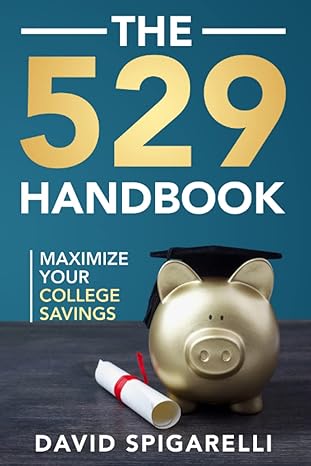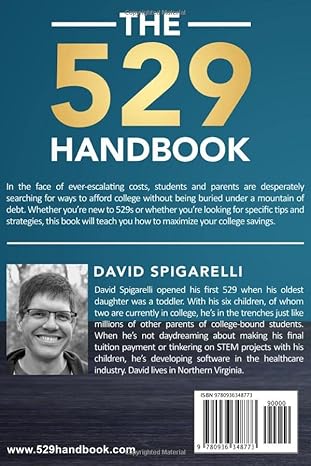Every parent dreams of setting their children up for success, not just academically or personally, but financially as well. With the right financial tools and planning, you can help your kids grow wealth from a young age, giving them a solid foundation to thrive in the future. Among the most powerful options available are 529 plans, UTMA/UGMA accounts, and Custodial Roth IRAs. This blog post will explore these options and how you can use them to make your kids rich over time.
1. 529 College Savings Plans: Building Wealth for Education
A 529 plan is a tax-advantaged savings plan designed specifically to help families save for future education expenses, including college, trade schools, and even K-12 tuition. It allows for tax-free growth of investments and tax-free withdrawals as long as the money is used for qualified educational expenses like tuition, books, and room and board.
Why It’s a Wealth-Building Tool:
- Tax Benefits: Contributions grow tax-free, and withdrawals are tax-free if used for qualifying educational expenses.
- State Tax Deductions: Some states offer tax deductions or credits for contributions to their 529 plans.
- High Contribution Limits: 529 plans often have high contribution limits, allowing for significant growth over time.
Strategy:
Start investing in a 529 plan as early as possible to maximize compounding interest over time. Even small, regular contributions can add up to a substantial sum by the time your child is ready for college. If your child decides not to go to college, you can transfer the funds to another family member or use them for non-educational purposes with a 10% penalty on earnings.
2. UTMA/UGMA Accounts: Flexible Wealth-Building
The Uniform Transfer to Minors Act (UTMA) and Uniform Gifts to Minors Act (UGMA) accounts are custodial accounts that allow parents or other adults to transfer assets to a minor. Unlike a 529 plan, which is strictly for education, UTMA/UGMA accounts can be used for any purpose that benefits the child, whether that’s education, buying a car, or even helping with a down payment on a house.
Why It’s a Wealth-Building Tool:
- Flexibility: The funds can be used for anything that benefits the minor, giving more financial flexibility than a 529 plan.
- Tax Advantages: While the earnings in UTMA/UGMA accounts are taxed, the first $1,250 in earnings is tax-free, and the next $1,250 is taxed at the child’s tax rate, which is typically lower than the parents’ rate.
Strategy:
Parents can use these accounts to gift assets such as stocks, bonds, mutual funds, or cash to their children while taking advantage of potential tax savings. Once the child reaches the age of majority (usually 18 or 21, depending on the state), they gain full control of the account, so it’s important to educate them on responsible financial management.
3. Custodial Roth IRA: A Powerful Tool for Lifelong Wealth
The Roth IRA is one of the most powerful retirement savings vehicles available, and opening a Custodial Roth IRA for your child is an incredible way to help them start building wealth for their future. The key eligibility requirement for a Roth IRA is earned income, meaning your child must have income from a job, which can include summer work, babysitting, or other side jobs.
Why It’s a Wealth-Building Tool:
- Tax-Free Growth: Contributions to a Roth IRA grow tax-free, and qualified withdrawals in retirement are also tax-free.
- Long-Term Growth Potential: Starting a Roth IRA for a child allows decades of compounding growth, which can result in significant wealth by the time they retire.
- Retirement and Flexibility: Roth IRAs also offer flexibility for early withdrawals, including for education expenses or a first-time home purchase, without penalty in certain circumstances.
Strategy:
Encourage your child to contribute a portion of their earnings to a Custodial Roth IRA. If they’re too young to make contributions on their own, you can contribute for them, up to the lesser of their earned income or the current annual contribution limit ($6,500 in 2024). Early contributions can lead to massive growth over the decades, especially with compounding interest and tax-free growth.
The Power of Starting Early
The earlier you start contributing to these accounts, the more time the funds have to grow. Compounding interest can work wonders over time, and starting when your kids are young can result in substantial wealth by the time they reach adulthood.
Example: The Power of Compounding Across Accounts
Imagine you start contributing $2,000 per year to each of these accounts for your child—$2,000 into a 529 plan for education, $2,000 into a UTMA/UGMA account for flexible use, and $2,000 into a Custodial Roth IRA as soon as they start earning income. Assuming a 7% average annual return, by the time your child is 18, the 529 plan could grow to around $63,000, the UTMA/UGMA account could be worth around $63,000, and the Custodial Roth IRA could be worth around $40,000 or more by early adulthood. Combined, that’s over $160,000 in wealth-building across multiple accounts.
Final Thoughts
Setting up your kids for financial success doesn’t have to be complicated. By leveraging the benefits of 529 plans, UTMA/UGMA accounts, and Custodial Roth IRAs, you can help them grow wealth from an early age and prepare them for a financially secure future. Each account offers different advantages, from tax-free growth and flexibility to retirement savings, so incorporating all of them into your financial plan can ensure your child has the best possible start on their path to wealth.
The key is to start early, stay consistent, and educate your kids on the value of saving and investing. By the time they’re adults, they’ll thank you for the financial head start—and the rich life you helped them build.

The 529 Handbook: Maximize Your College Savings Paperback – May 29, 2022 – Paperback $14.99

Whether you’re new to 529s or whether you’re looking for specific tips and strategies, this book will teach you how to maximize your college savings.